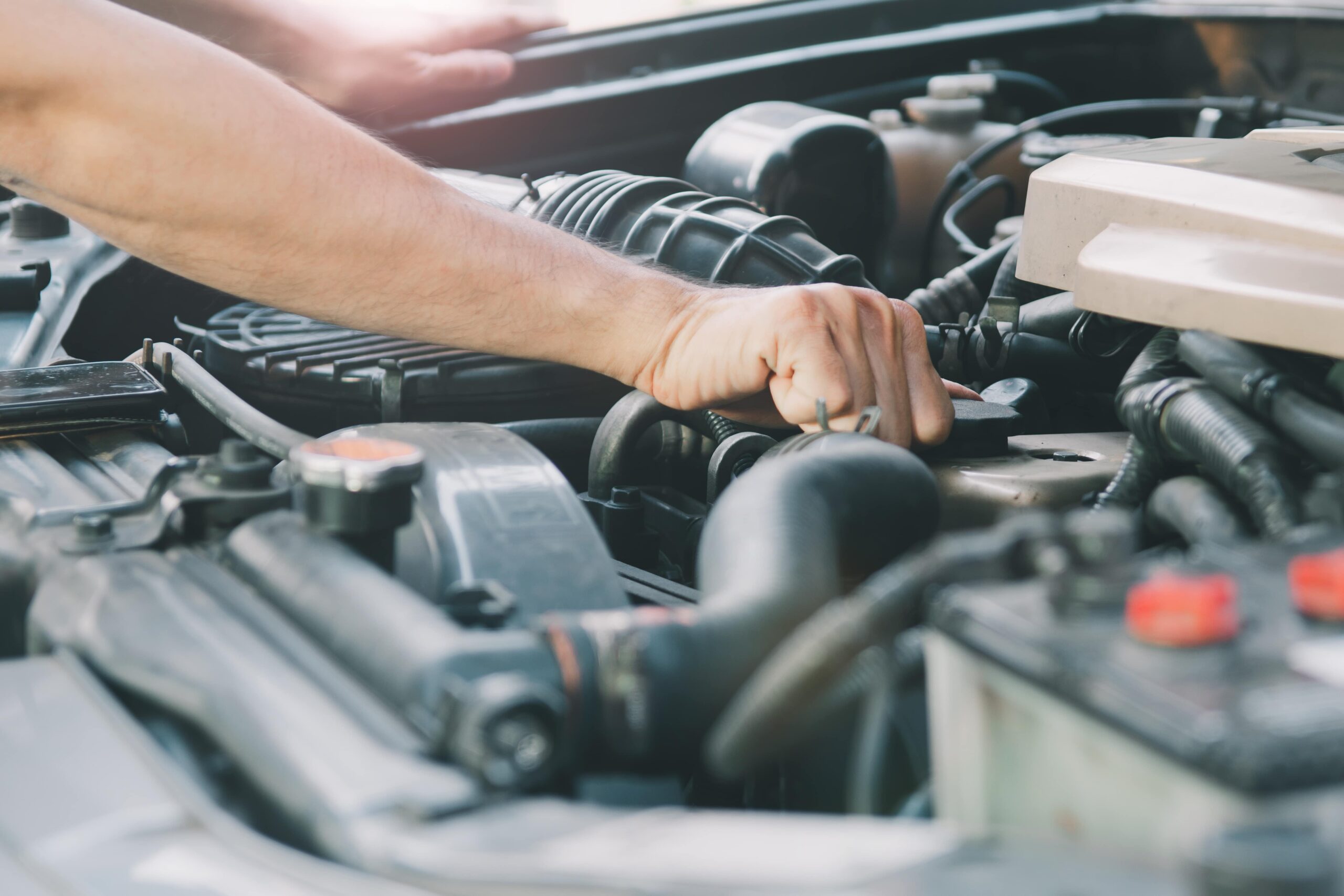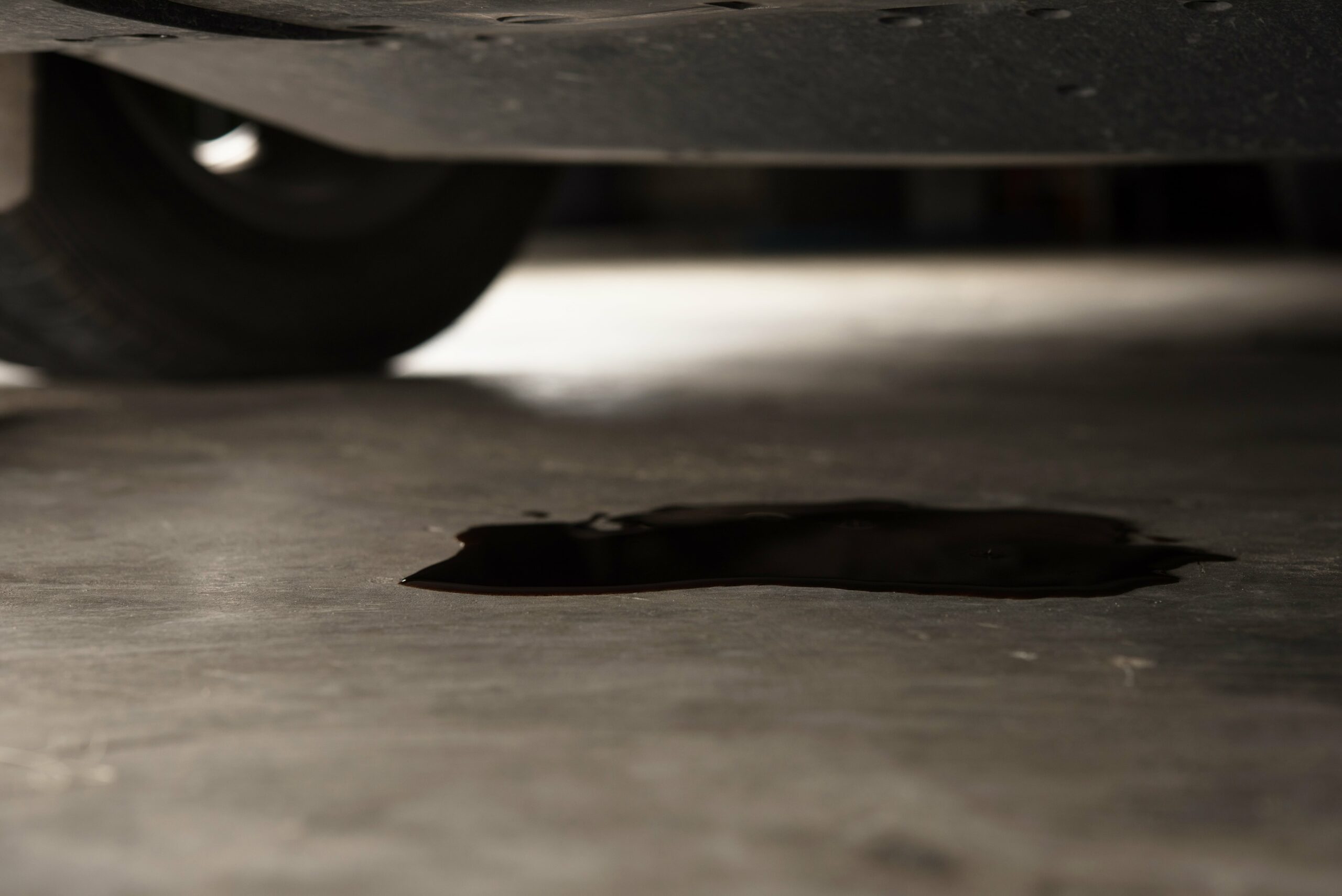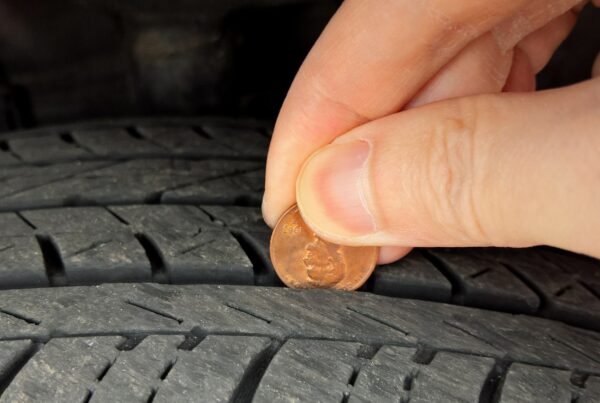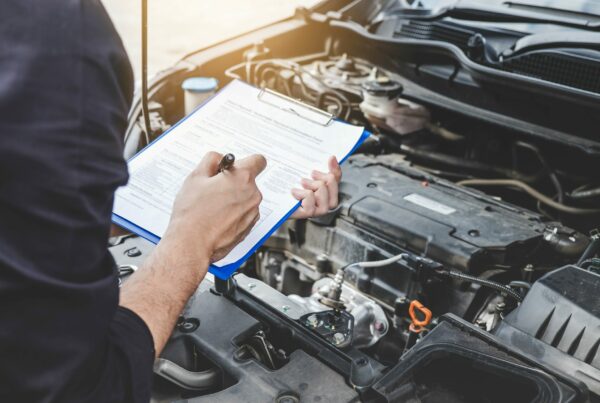Don’t let a mysterious pool of oil under your car dent your plans to hit the road. If you find yourself in this sticky situation, chances are it’s an engine leak causing the mess. With knowledge of how to find oil leaks, you can quickly identify the source of the problem and fix it in no time.
Oil leaks can cause irreversible damage to your car. So, understanding the root cause of any leaks is always a good idea. Here’s a walk-through on how to find oil leaks and identify the causes.
Identifying Oil Leaks in Your Car
There are two proven ways to spot oil leaks in a car, and they are helpful when you have no idea where the leak is coming from. The first is an old-fashioned method of using talcum powder to find the leak’s location. The second uses UV dyes and lights to lactate the leak and is a common method with modern auto repair shops.
Both methods are effective in detecting oil leaks. However, talcum powder is a simple and cost-effective way to find leaks, while UV dyes and lights are more technical and precise.
Steps to Identify Oil Leaks Using Talcum Powder
There are five steps to identify oil leaks using talcum powder.
Step 1: Start by thoroughly cleaning the area around the suspected leak. Use a cloth or paper towel to remove excess oil or debris. This will help ensure that the talcum powder sticks to the oil, making it easier to follow the trail.
Step 2: Sprinkle a generous amount of talcum powder around where you suspect the leak is occurring. You can use your fingers or a small tool to apply the powder. However, ensure its spread evenly and covers a good amount of the surface.
Step 3: Let the engine run for a few minutes to allow the oil to start circulating. Keep an eye on the area where you applied the talcum powder. You should begin to see a trail of oil forming as it mixes with the powder.
Step 4: Follow the trail of oil back to its source. The talcum powder will make it much easier to pinpoint the exact location of the leak. Once you find the source of the leak, you can take the necessary steps to repair it.
Step 5: Use a clean cloth or paper towel to remove excess talcum powder and oil. You don’t want to leave any residue behind, that could cause further problems.
Identifying Oil Leaks Using UV Dye and Light Method

Steps to identifying oil leaks using the UV dye method:
Step 1: The first step is to add the dye to the oil system. You can do this by pouring the UV dye into the oil reservoir or adding it directly during an oil change. Once the dye is in the system, run the engine for a few minutes to circulate it.
Step 2: Next, turn off the engine and scan the entire engine compartment using a UV light. The dye will appear bright yellow or green under the UV light, making it easy to spot any leaks. Follow the dye trail to the leak’s source and make the necessary repairs.
Possible Causes of Car Oil Leaks
Oil leaks from your car’s engine can stem from various sources, each demanding a specific fix. Examples are the following:
Oil Drain Plug and Filler Cap
Two common causes of oil leaks are the oil drain plug and oil filler cap. A damaged or worn-out oil drain plug at the bottom of the oil sump can cause leakage. A leakage can also happen if you forget to replace the plug or the oil seal during oil changes or if you don’t tighten it correctly.
If you notice oil puddles under your car, it might be an oil sump leak caused by a faulty drain plug.
An oil leak can also occur if the oil filler cap becomes loose or broken. Thankfully, fixing this issue is as simple as tightening or replacing the cap.
Crankcase Ventilation
The crankcase’s proper ventilation plays a huge role in ensuring your car engine functions well. The ventilation process involves a valve and a hose connected to the intake that allows smooth air passage in and out of the crankcase.
However, if this crucial ventilation mechanism becomes clogged or obstructed, the engine can experience excessive pressure build-up. This is the leading cause of a host of car problems.
Damaged Head Gasket and Crankshaft
A damaged head gasket is one of the most common causes of oil leaks in cars. The head gasket is responsible for sealing the combustion chamber and coolant system. When it is damaged, oil can leak into the coolant system, leading to many problems.
Sometimes, the damage is so severe that oil leaks out of the engine completely. So, if you notice oil pooling between the engine block and cylinder head, you need to act fast.
Worn-out seals on the crankshaft or camshaft are another cause of oil leaks. These seals are constantly moving and can wear down over time. When they wear, oil seeps out of the engine. So, if you notice oil leaking from the gearbox housing, it’s likely a crankshaft oil seal leak. Another name for this kind of leak is a gear oil leak.
Valve Cover Gasket
The valve cover protects the parts inside the cylinder head, and the gasket seals them together. If oil leaks from the engine’s top, it may be due to a worn-out valve cover gasket, which needs replacing to avoid further damage. Check your gasket’s condition regularly to prevent oil leaks and extend the engine’s life.
Overfilling the Oil
An oil leak can sometimes result from something as straightforward as overfilling the oil.
If you spot a pool of oil beneath your car, but the dashboard oil light isn’t blinking, it could be a sign of overfilling. Be mindful of how much oil you’re putting in to prevent leaks and ensure your engine’s longevity.
Engine Oil Cooler and Pressure Sensor
Oil leaks from the front of the engine can indicate a faulty engine oil cooler. Cracked plastic seals can cause this kind of oil leak. Simply replace the seal to stop the oil from leaking.
Another cause of oil leaks could be the oil pressure sensor. The oil pressure sensor is in the cylinder head or engine block. Over time, the plastic sensor can crack, resulting in a leak.
Auto Plus Is Here For You
There’s no need to panic when facing an oil leak. Most oil leaks have solutions, whether simple or complex, and you don’t have to fix them by yourself.
Our team at Auto Plus can help you find the solution to any problem you may be experiencing with your car. We understand that oil leaks can cause serious issues. So, if you are facing a leak in your car, don’t hesitate to contact us. We’ll help you find a solution that works for you. Schedule An Appointment and let our automotive experts get your car ready for that next adventure.





